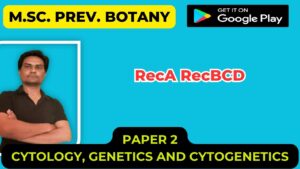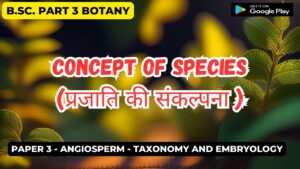![]()
Plant Development Introduction
- A plant is a nature’s highly efficient device, which very preciously uses all its resources to develop into a complete entity.
- A plant starts its life in the form of a small seed, which contains a very small embryo along with a little amount of stored food.
- When this seed gets proper external conditions, it starts imbibing water, which dilutes the otherwise concentrated cytoplasm of seed cells.
- These cells become active and start production of active enzymes, which further take part in metabolic activities.
- Increased rate of metabolism, leads to increase in cell mass and there by cell and nuclear inclusions.
- Many other external and internal factors together activate the cells to be meristematic.
- These factors include nucleic acids, available food stuff, hormones etc
- The growth in plants is localized to the meristems.
- These meristems together form the second level of structural units the metamers.
- The repetitive occurrence of these metamers forms the modules.
- These modules form the organs like shoot, root & leaf.
- The small developing embryo breakes it’s covering, the seed coat, and comes out i.e. germinates.
- When it receives proper light, temperature and air, it starts differentiating into various cells.
- Growth hormones influence all the development processes.
- They influence the plant at cellular level, organellar level and even at the level of whole plant.
- They are -actually chemical messengers, organic in nature, synthesized in response to some environmental stimulus in one part of the plant and translocated to another part of the plant where it has a controlling or regulatory effect.
- These hormones also regulate the movement of plants in response to external factors.
- In this unit, we shall try to understand the development of a new plant, from a tiny seed.
- How does this seed transform into a new plant, and what are the factors which affect the germination and differentiation?
Features of plant development
- All the living beings have a common feature of growth. It can be defined as an irreversible and permanent increase in mass, weight, volume of cell, organ or organism.
- Growth is a common word used to designate any change in an organism. But, it should not be confused with the development.
- Development is an ordered change or progress towards a more complex state. It is also an irreversible process that means a differentiated organ can not become an undifferentiated one.
- In unicellular and some other lower forms of plants, all the cells of the body divide, hence the growth is diffused.
- But in higher plants, growth is restricted to definite regions of the body called meristems.
- The plant body shows two types of growth-
- Determinate growth – When a structure grows to a certain size and then stops, ultimately falls off after senescence eg. Leaves, flowers & fruits.
- Indeterminate growth- when a structure continues to grow for an indefinite time. eg root & shoot.
- The growth and development of the plant is ultimately the growth and development of the plant cell.
- So, we can express the development of the plant at following levels-
1. Cellular level-
- The cells enlarge, elongate & then undergo karyokinensis & then cytokinensis.
- These cells differentiate to form various tissues & tissue systems.
2. Organ level –
- The single celled zygote undergoes predetermined divisions to form a well-organized embryo.
- This embryo develops to form a seed, which in turn, develops into a seedling which after full maturation forms root, shoot, leaf, flower & fruits.
- The site of the formation of these organs & the time of the formation is preset in the plant.
- It also forms special organs like tubers, rhizomes, bulbs, corns, bulbils etc.
- This level also decides and forms abscission layers in ripen leaves and fruits.
- At this level, movements of organs, either environmentally controlled or Nastic movement are also included.
3. Whole Plant level –
- At this level, plant’s overall form, in terms of polarity, symmetry is controlled.
- During the plant’s life cycle, certain morphological and genetical events take place.
- They are in correlation with time.
- Germination always takes place at a season favorable for the growth.
- The onset of flowering is again a time, photoperiod and temperature influenced phenomenon.
- Similarly, dormancy of germinating buds, seed and other vegetative parts is again a way to avoid particular time during the season.
- So, we can say that all primary tissues of a plant are developed by the activity of embryonic cells.
- Some of the embryonic cells at embryonic root and embryonic shoot become meristematic.
- They are apical in position and by their activity, root and shoot apices are formed.
- Here, other types of meristems as marginal, intercalary, plate, rib are formed; all of them contribute to the longitudinal and latitudinal development of the plant.
- An important aspect of apical meristem is their repetitive activity.
- They divide at regular intervals to form group of cells as leaf primordium in stem apex & root primordia in root apex.
- The time interval between the two successive leaf primordia is 3-4 days.
- At the higher level of the whole plant, there are periods of meristems activity and inactivity.
- Thus, the higher the level of organization; the longer the period of the rhythm.
- These rhythmic activities result in the construction of 3 types of structural units that are fundamental to plant form.
- The first – the cell is the source of other cells and of other structural units. Their auto reproduction results in the formation of the meristems.
- The meristems form the second – the metamers eg.
- The apical meristem of shoot produces leaves, internodes, nodes and buds, these four are known as metamers.
- The metamers form a more complex unit – the module.
- The modules are present as combined units of morphologically similar metamers.
- The growth of module is either terminated in an inflorescence, tendril or spine or in parenchymatous axis.
- Module development continues only as long as the apical meristem is active.
- When it becomes inactive it gives a stimulus for axillary bud to become active and thus bring about branching of the module.
- The position of a module is a relative and not a fixed property.
- The addition and growth of new modules causes the relative positions and state of the already existing modules to change.
- Combinations of modules construct an even higher level of organization the system of shoot and roots.
- The spatial arrangement of modules determines the particular morphology of systems.
- As many as 23 types of modules have been recognized in shoot system of trees.



